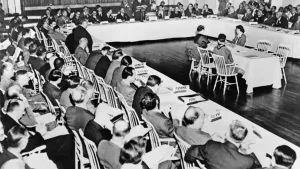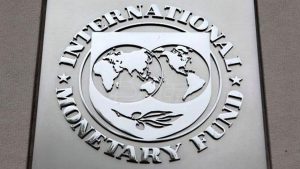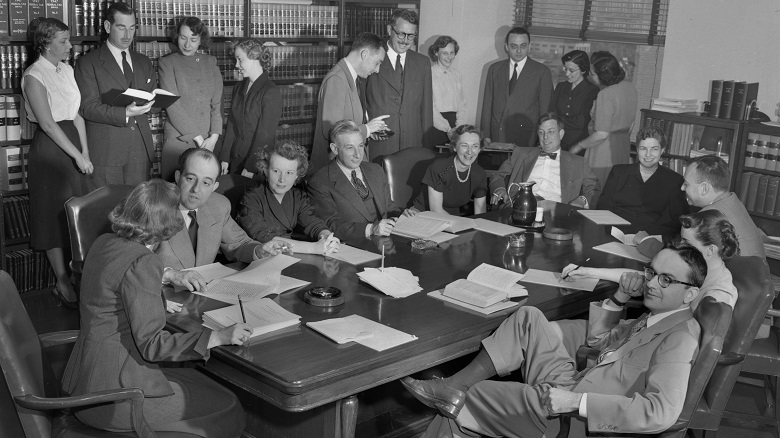Have you ever wondered why the World Bank was established? This blog post will tell you the true story of how the World Bank came to be. Starting in 1944, at the United Nations Monetary and Financial Conference in Bretton Woods, New Hampshire, delegates from 44 Allied nations gathered to establish a new international economic order after the end of World War II.
The goal of the conference was to create a framework for international economic cooperation, which was the first step in the creation of the World Bank. In this post, we’ll explore the history of the World Bank, why it was established, and how it has evolved since its inception. The World Bank was established in 1944 to aid in the reconstruction of Europe after World War II.
But why was the World Bank created in the first place? In this blog post, we will explore the true story of why the World Bank was established and how it has evolved over the years. By uncovering the motivations behind its establishment, we can gain a better understanding of why the World Bank is so important in today’s global economy. The World Bank has had a tremendous impact on the global economy since its establishment in 1945.
But why was the World Bank established in the first place? In this blog post, we will explore the true story of why the World Bank was established and the important role it has played in the global economy for over seven decades. By examining the reasons why world bank was established, we can gain a better understanding of its significance and the impact it continues to have on the global financial landscape.
The True Story of How the World Bank Was Established

The end of WWII
The goal of the World Bank was to provide financial assistance to nations in need of economic support. Initially, its focus was on rebuilding Europe after the war, but its mission quickly grew to encompass helping countries achieve sustainable economic growth and reduce poverty.
The World Bank has since become one of the most important international organizations in the world, and its goals are as important today as they were at its founding. In the decades following WWII, many developing countries needed outside help from the World Bank to grow their economies because the war had destroyed a lot of physical capital and left them saddled with large debts that took years for them to repay.
The Marshall Plan – which was the first of several major aid programs sponsored by the U.S. – went a long way towards stabilizing Western Europe by giving it money and low-interest loans from the World Bank. By the late 1960s, these countries had been able to pay back what they owed and make steady progress toward becoming fully self-sufficient. By that time, though, many other parts of the world had taken much longer to recover from the devastation of WWI: The end of WWII
The Bretton Woods Conference

At the s the World Bank. The IBRD was created to help countries rebuild their economies, and to provide financial aid to developing countries. The agreement also established the International Monetary Fund (IMF) to assist countries in managing their exchange rates and maintaining economic stability.
Since its creation, the World Bank has evolved and grown into one of the most powerful international organizations in the world, providing much-needed loans, grants and technical assistance to countries around the globe. The organization continues to be a major force for economic development and global peace. The agreement that was made at the Bretton Woods Conference allowed the IMF to stabilize national currencies by borrowing funds from the IBRD or vice versa if necessary.
The IMF and the IBRD agreed on the importance of exchanging periodic reports on the state of their operations with each other so that each could assess any new conditions affecting either institution’s transactions or policies. A year after it began operations, membership in the IMF reached 67; today there are 189 member nations. The IMF is an intergovernmental organization run by 188 member states; they discuss and vote on changes to its charter every five years at an Annual Meeting of members.
The head of each nation’s delegation is called a representative, which can be thought of as analogous to an ambassador, who meets with other representatives to create country teams focused on specific topics such as capital markets or trade policy that meet throughout the year at various locations around the world.
The International Monetary Fund

The IMF was created at the end of World War II as part of the Bretton Woods Agreement. This agreement established the monetary system that governed world currencies for more than three decades, and it also created two new organizations: the World Bank and the International Monetary Fund.
The World Bank would provide financial aid to developing countries to help them develop their economies, while the IMF would oversee the international monetary system. The IMF’s main objectives were to monitor exchange rates, provide advice to countries on economic policies, and lend money to countries with balance of payment difficulties.
Today, the IMF continues to work to promote global economic growth and stability. It provides loans to governments facing short-term economic crises, offers assistance to countries seeking to liberalize their financial systems, and provides technical assistance in areas such as public finance and debt management. The IMF also helps countries implement economic reforms and works to prevent global financial crises. Ultimately, the goal of the IMF is to foster a strong and stable global economy.
The World Bank
Since its establishment, the World Bank has provided more than $500 billion in low-interest loans and grants to over 100 countries around the world. Today, the World Bank remains an essential partner for developing countries in their efforts to achieve sustainable economic development and social progress.
It’s a key driver of global growth and international development – as well as the world’s largest provider of long-term development finance. The World Bank offers financing, knowledge and advocacy for national governments seeking the best ways to end extreme poverty by 2030. In the first two decades of our history, we supported national building projects that laid the groundwork for East Asia’s transformation from some of the poorest places on earth into what are now among the most prosperous economies in history.
In subsequent decades, we helped bring about a broad range of other improvements in these countries: health care access expanded from 6% to 96%, primary school enrollment rose from 25% to 98%, life expectancy increased from 46 years old to 72 years old, infant mortality declined by more than 60%, maternal mortality was cut by 75%, millions gained access to clean water or sanitation facilities, urban slums were cleared out so new cities could be built with affordable housing. We continue the work today and this time we’re focused on ending extreme poverty in South Asia.
We have financed the renovation of rural schools; promoted private-sector investment; led large investments in Pakistan’s electricity grid; trained local entrepreneurs; made HIV/AIDS treatments more available, affordable, and accessible; worked with the International Monetary Fund to help reduce debt burdens in African countries such as Zambia, Ghana, and Nigeria; coordinated emergency food aid after natural disasters like the recent earthquake in Haiti.
In Africa alone, between 2005 and 2010 The World Bank Group will invest $9 billion for sustainable agriculture projects that can double crop production, create jobs for farmers and entrepreneurs, help improve nutrition rates among children under five years old by one third, reduce malaria cases by 50 percent through bed net distributions which will save thousands of lives every year.
This article is complemented by an enlightening YouTube video titled “The History of Global Banking: A Broken System?” The video offers a comprehensive look at the history of global banking and its impact on the world. We extend our appreciation to the content creator for their insightful exploration of the subject.
Conclusion
In conclusion, the World Bank was established in 1945 as a way to promote economic growth and development around the world. It was initially funded by 44 countries, all of whom had a vested interest in promoting financial stability and sustainable development across the globe.
Over the years, the World Bank has evolved to become one of the most important international institutions for tackling poverty, promoting economic development, and ensuring equitable access to resources and opportunities. Today, the World Bank continues to serve its mission to provide funding, technical assistance, and advice to countries around the world in order to achieve greater economic growth and reduce poverty.
